Climate change creates a multitude of issues for farmers in Wisconsin and it has two main components: 1) increasing precipitation and 2) increasing temperature3. The impacts of these vary across the state and seasonally. The most noticeable and measurable change in our climate will be increased daytime temperatures, however, changes at the beginning of the growing season, in spring, also present unique challenges to Wisconsin farmers and surface water quality. Managing soil loss due to the spring thaw and rain is not new for farmers, but climate change will exacerbate issues created by Wisconsin’s combination of cold winters and high amounts of precipitation.
This article includes 1) impacts of climate change in spring in Wisconsin, 2) the consequences of climate change with a focus on phosphorus, and 3) practices to increase farm resilience in the face of rapidly changing weather in spring.
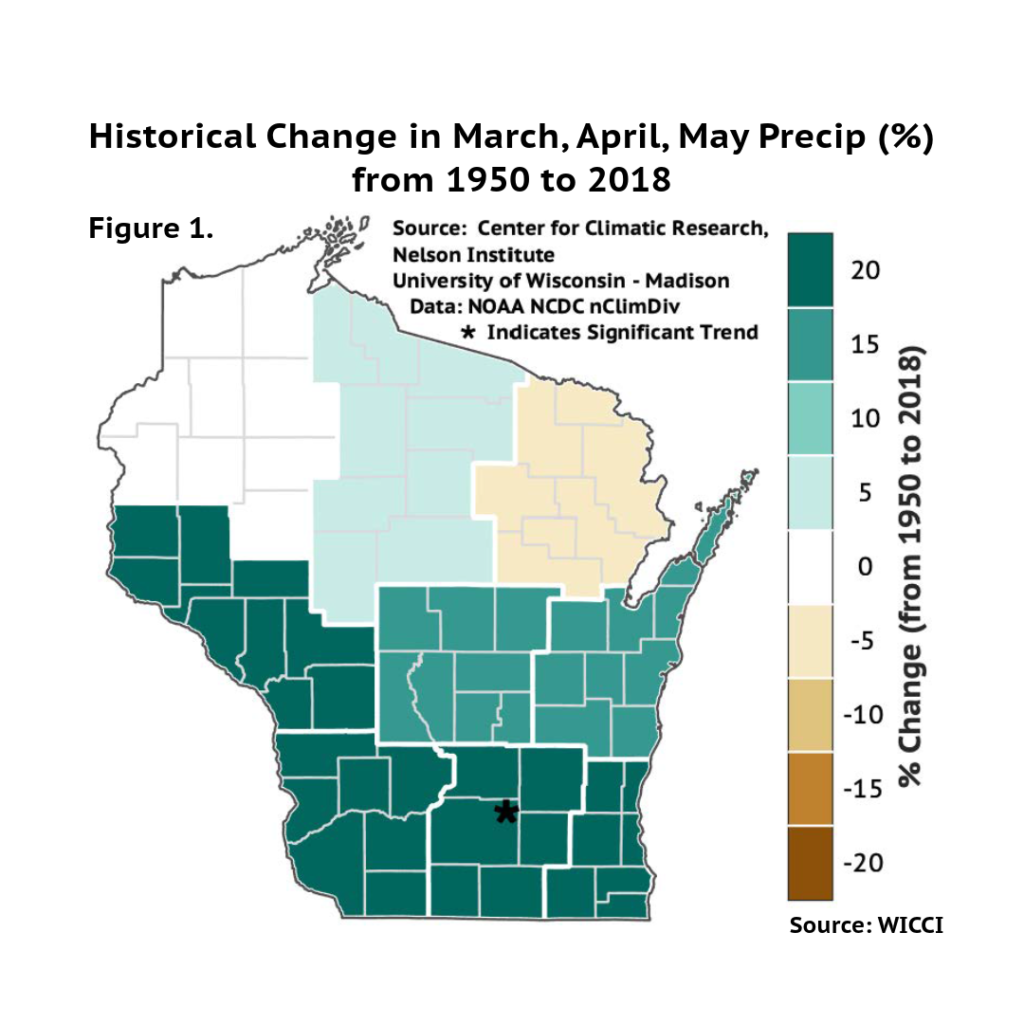
Wet springs, warm winters: What is the new normal?
From 1979 to 2021, Wisconsin has seen a 2.6 inch increase in average March, April, and May precipitation. Spring is predicted to have the greatest increase in precipitation in this century (Figure 2). Extreme precipitation events (2 inches or more in one event) are also on the rise. The annual and 5-year maximum daily precipitation has gone up 10% over the last 60 years6. Spring is becoming altogether more wet and rain is more likely to come in extreme events.
Winter is warming the most of any season and this will affect spring through the change in snow melt, by either reducing the total snow melt or changing the timing of it. Winter thawing and subsequent refreezing cycles, also known as “freeze-thaw events” are increasing. In spring itself, average daily temperatures are projected to increase by 4-5°F by mid-century1.
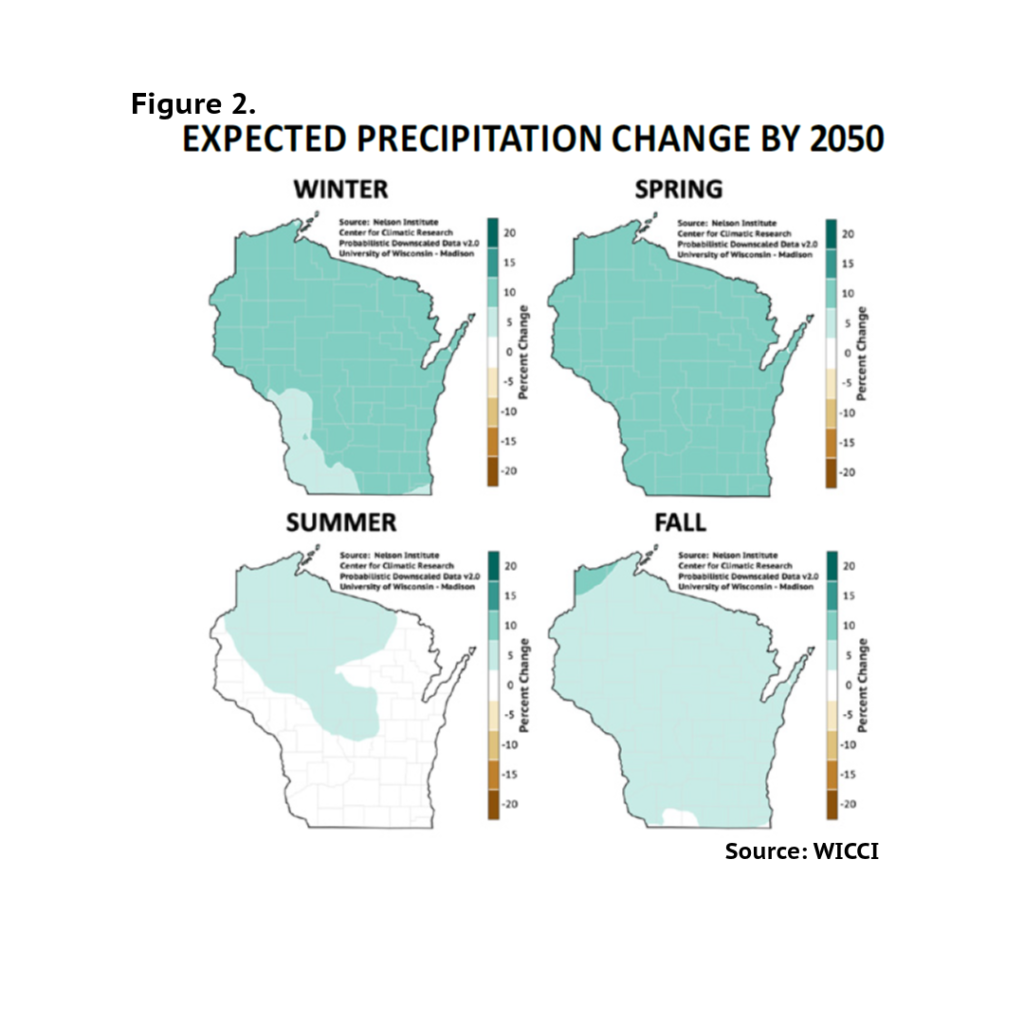
Your spring climate change summary
- Springs are becoming warmer. This could mean a longer growing season, but temperatures are more unpredictable, making planting annual crops riskier.
- Springs are getting much wetter. The precipitation is more likely to come in the form of extreme events and be more erratic.
- Less snow is falling in winter, decreasing the snowpack and thus snowmelt in the spring. The snowmelt is a source of soil moisture that is less likely to cause soil loss than intense storms. It is possible that early season (March, April) droughts could be worsened by less snowmelt.
Climate change implications: Runoff and phosphorus loss
Increased rainfall in spring, and more extreme rainfall events have delayed or interrupted activity in crop fields, such as planting and harvesting. Temperature and precipitation changes will also have a powerful effect on soil health, runoff, and surface water quality.
There are two things required for nutrient and soil loss to occur: transport and a source. Think of the increase in precipitation and extreme events as an increase in transport. Consider a storm event recorded on a Discovery Farms site in May which produced 1.2 inches of runoff (transport) compared to an event of similar magnitude in August, which produced no runoff at all. Fields that are bare or just planted (source) in spring do not have the same capacity for infiltration that a mid-season crop does. Soil infiltration is also influenced by the increasing number of thaws and refreezes which disrupt soil aggregate structures, decreasing infiltration capacity.
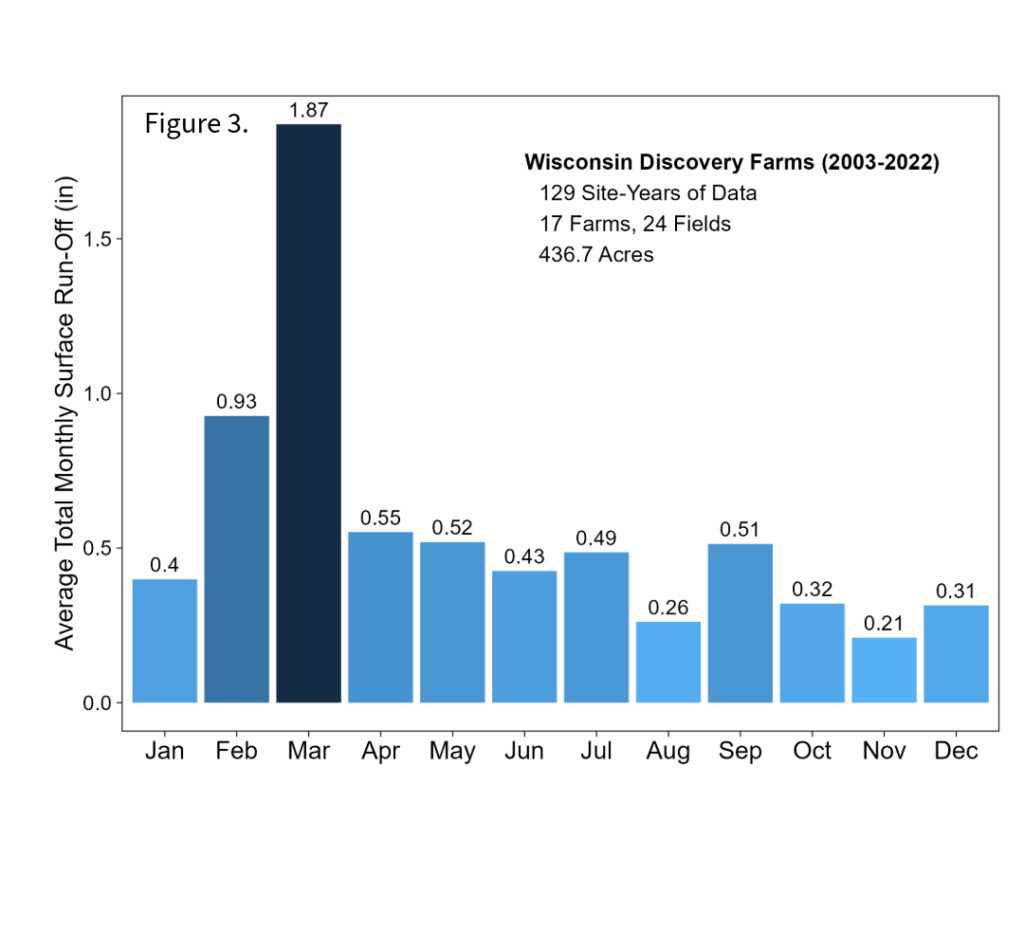
On average, March is the month with the highest total runoff (Figure 3). Snow melt and spring rains in March saturate the soil, which leaves it unable to hold more precipitation, causing runoff. It is also common in March for runoff to occur when rain falls on frozen ground. As precipitation increases and temperature becomes more erratic, the runoff peak may increase. As winters warm and spring precipitation increases, the peak runoff timing may change.
The majority of phosphorus is lost from March to June, split about 50/50 between particulate and dissolved phosphorus. Dissolved phosphorus is lost during the time of greatest total runoff, in March. March runoff contains more dissolved phosphorus because it includes pore water, which has pulled phosphorus from the top inches of soil, snowmelt or rain on frozen ground that cannot infiltrate into the soil, or manure or fertilizer that has been surface applied on frozen ground. If runoff changes in timing or in intensity, so will the peak in dissolved phosphorus loss.
On the other hand, particulate phosphorus is bound to soil particles and is lost when soil moves off the field. Discovery Farms data consistently show large soil loss events in May and June due to heavy spring rains and soil disturbance4. While 7500 lb/ac of soil was lost on a Rock Co Discovery Farm, it carried with it 6.8 lb/ac of particulate phosphorus5. Practices that cover the soil, like cover crops, and decrease disturbance, like reduced tillage would be straightforward ways to mitigate particulate phosphorus loss. Addressing the loss of both dissolved and particulate phosphorus requires accounting for both meltwater and heavy spring rains, both of which will become more inconsistent due to climate change.
Build resilience to climate change by adapting to the changes that we see in Wisconsin
Carefully consider what might serve as sources in fields and pastures and choose your resilience techniques accordingly. Some techniques reduce nutrient sources and increase water infiltration, some will help slow runoff and capture nutrients before they enter surface water. The key is often to use some of both. This can help generate fields that are resilient to unpredictable precipitation, including both too little and too much rain. Incorporating one or more of these techniques increases overall resilience to temperature and precipitation variances in spring and throughout the year.
- Overwintering living cover crops can counter the challenge of increasingly wet springs by establishing biomass to improve soil health and water infiltration. Both below ground biomass and above ground cover can decrease runoff, soil loss, and phosphorus loss2.
- Improve nutrient application and manure management practices so rates and time line up with crop needs. Give plants the nutrients they need when uptake is at its highest, so less nutrients are left at risk for runoff2.
- Decrease soil disturbance for the benefit of soil health, increasing the soil’s water-holding capacity. If more water is drawn into the soil, less water can runoff, even during extreme rain events. This also increases the amount of water the soil can hold before it is “saturated”, which helps protect from sheet erosion and sustains the crop in dry periods.
- Consider taking flood-prone areas out of production and planting them to permanent cover: gaining a filter strip, a riparian buffer and a benefit to pollinators all in one. Extreme storms make planting in wet areas more risky – yield reductions, planting delays or harvest delays, can all impact profitability. This practice relieves that risk, improves the resilience for the rest of the field(s), and can provide forage3.
- Explore agroforestry practices such as windbreaks and hedgerows, alley cropping, and silvopasture systems which can slow down and filter runoff, keeping more nutrients and soil in place3.
Spring is already a time of great seasonal change in Wisconsin. The changing climate will push those changes to their extremes. Making farms more resilient to those extremes means planning for a wide range of events, from droughts to floods, early thaws and late freezes. The pathway to resilience must also be broad and have multiple layers.
Resources
- 2021 WICCI Assessment Report – https://wicci.wisc.edu/2021-assessment-report/
- Agriculture Working Group Report – https://uwmadison.box.com/s/5f6zzxuzf4pffidldq6jrsiv392b47be
- USDA Climate Hub Wisconsin Agriculture Vulnerability Assessment – https://www.climatehubs.usda.gov/sites/default/files/Climate%20Change%20Impacts%20on%20Wisconsin%20Agriculture.pdf
- Discovery Farms Climate Change effects of edge-of-field runoff – https://uwdiscoveryfarms.org/wp-content/uploads/sites/1255/2021/04/2103-Updated-Storms-Handout.pdf
- Discovery Farms Rock County Monitoring Report – https://uwdiscoveryfarms.org/wp-content/uploads/sites/1255/2024/02/Rock-Co-Report-2024-2.pdf
- 5th National Climate Assessment – https://nca2023.globalchange.gov/

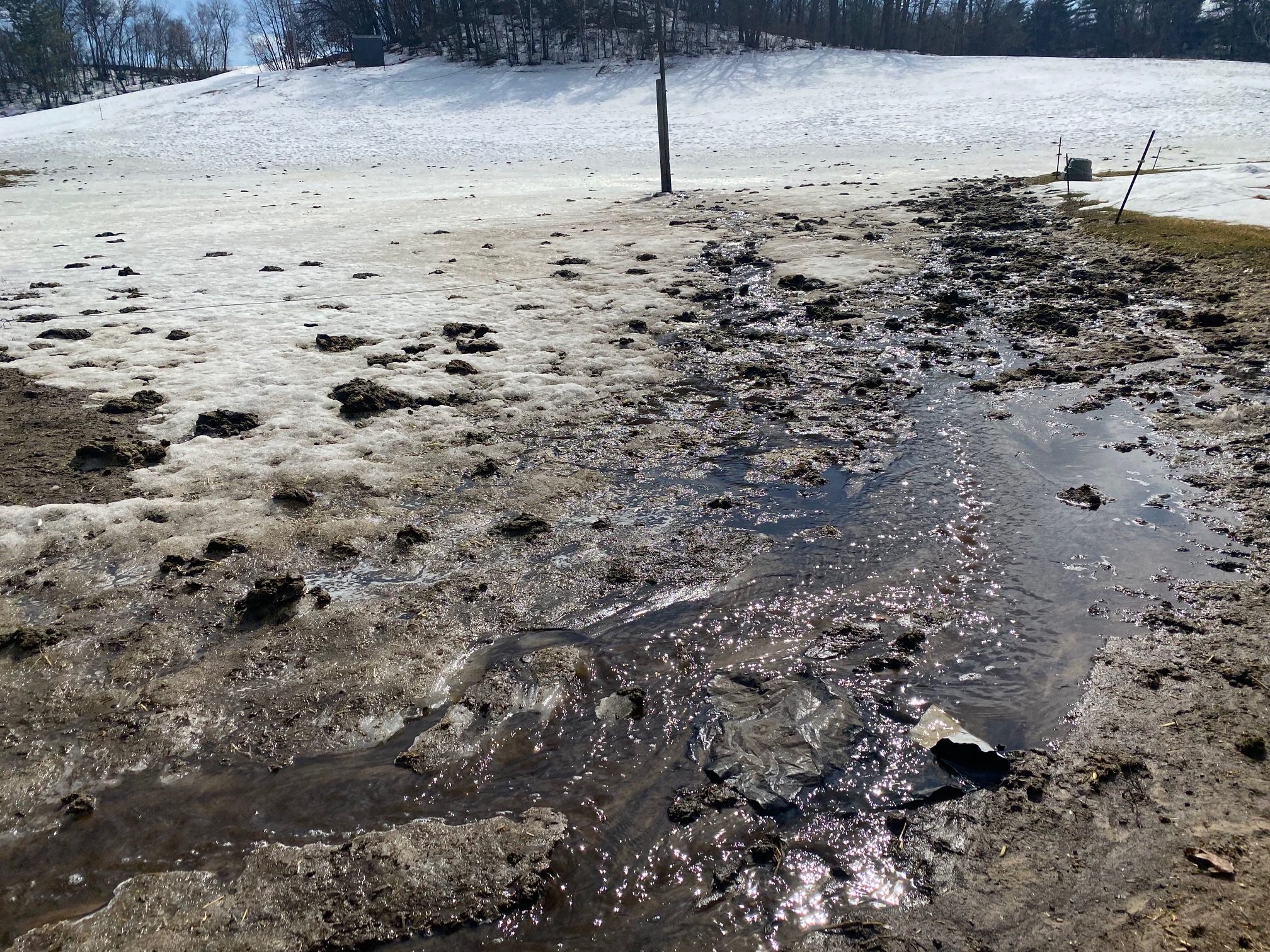
 Bouncing between frozen and thawed
Bouncing between frozen and thawed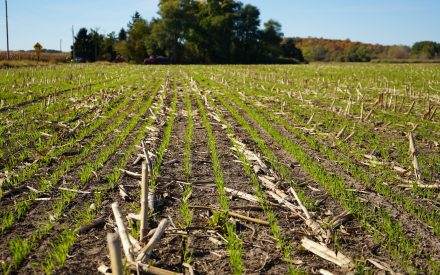 Phosphorus Losses Checked by Layered Practices and Careful Timing: A Discovery Farms Project
Phosphorus Losses Checked by Layered Practices and Careful Timing: A Discovery Farms Project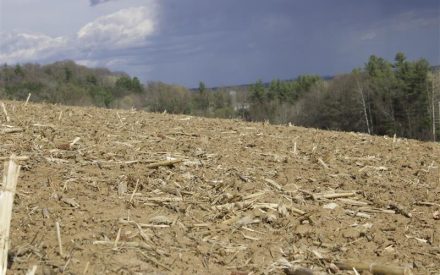 ▶ The Zone of Interaction: Exploring phosphorus stratification
▶ The Zone of Interaction: Exploring phosphorus stratification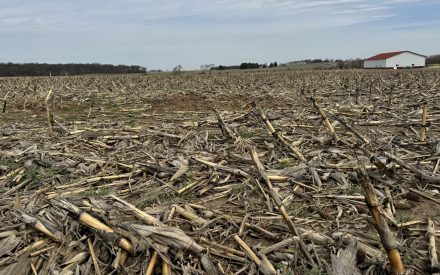 Wanted: Fields under cover
Wanted: Fields under cover


